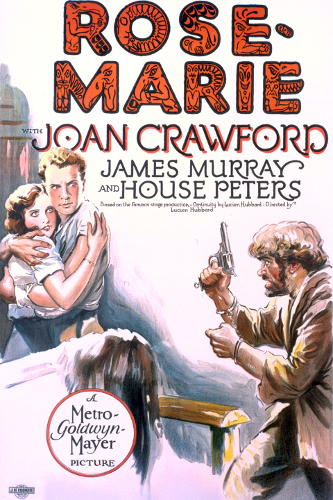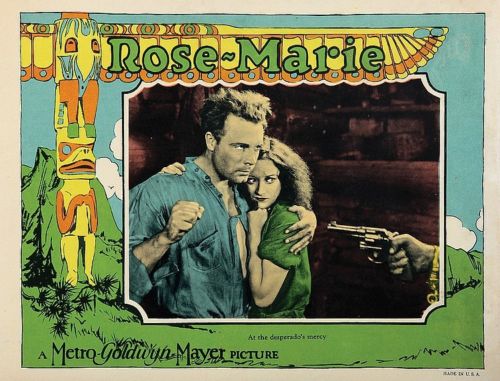Edgar Waite
in the Los Angeles Examiner (1928):
Rose-Marie,
divested of the musical comedy flavor in which it was last seen..., turns out
to be a drama with quite a lot of suspense....Miss Crawford, who looks astonishingly
like Pauline Frederick, does rather a fine piece of work. There is depth to
her portrayal, though once or twice she may oversentimentalize.
J.G. in the
St. Paul Pioneer Press (1928):
Joan
Crawford, one of the most admired of the new leading women, has the title role.
This is about the first time that she has been permitted to be anything but
statuesque and patrician. She changes her character with a vengeance, flinging
herself fiercely into the wildcat passions of the role of the French Canadian
girl and also into the purring cutenesses it calls for. She is pleasant to look
at in both phases.
Photoplay
(1928):
Exciting
fights and daring escapes. An excellent cast with Joan Crawford a charming Rose-Marie,
the daughter of the northern icebound country, who warms the hearts of all the
men around her....It's a little complicated but offers suspense.
Mordaunt
Hall
in the New
York Times
(February 13, 1928):
Filming a musical comedy
narrative seldom results in any marked success, and the present
transcription of "Rose-Marie," now on view at the Capitol, is no
exception to the rule. The praiseworthy passages of this effort are
more than offset by the muddled story, the ridiculous suspicions and
the tedious and frequently absurd incidents. Rose-Marie may be a very
charming girl with more than her share of good looks, but there are
times when she seems to be somewhat heartless. This is particularly so
when Etienne, the husband whom she is forced to marry, is presumed to
be dying. Rose-Marie is about as anxious regarding his condition as if
the poor chap had only a bad cold, whereas the melodramatic title
writer has taken the trouble to let it be known that Etienne is
suffering from a broken back. Hence one has the opportunity of
perceiving Rose-Marie listening to James's protestations of love while
Etienne is getting nearer and nearer his end.
In this yarn of the Canadian backwoods Rose-Marie's accent makes her
say "beeg," "keel" and "Jeem." The recital commences with peace, and
then James, a husky trapper or voyageur, appears upon the scene and
forthwith is smitten by Rose-Marie's lovely presence. He is persistent
in his embraces, and soon Rose-Marie is fearful, and she says:
"Kind God, protect me."
Most of this picture, however, is devoted to showing how this young
woman protects James, who, immediately after acknowledging that he is
desperately in love with Rose- Marie, discovers that he is suspected of
slaughtering an Indian. The handsome Irish Sergeant of the Royal
Mounted Police, himself an ardent admirer of Rose-Marie, is therefore
forced to go after his man.
Lucien Hubbard, director of this subject, has some queer notions of
suspense. In one spot the real murderer pops up with handcuffs locked
on one wrist. Most stupidly, the Sergeant has left his revolver on a
chair and the murderer shows a decided keenness to gain possession of
the weapon as he looks through a window of the shack. Just as he is
about to snatch at the pistol, the Sergeant takes it out of the holster
to use the butt as a hammer. Then the Sergeant replaces the weapon and
you have the result in a few moments—bullets flying, the murderer
having the handcuffs unlocked and a number of equally
impossible-happenings.
Joan Crawford is most prepossesing as Rose-Marie, but she seems like
a girl who flings the past quickly behind her, especially when James
holds her in his arms. James Murray is fairly competent as the hero,
but the best performances are delivered by Creighton Hale as Etienne
and House Peters as the Sergeant. |
 MGM silent. 70 minutes.
MGM silent. 70 minutes.













